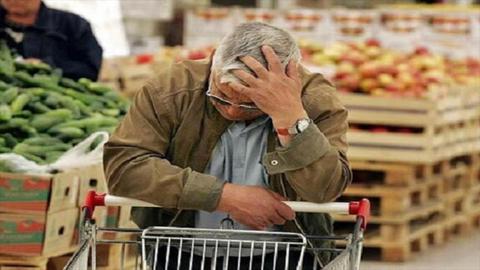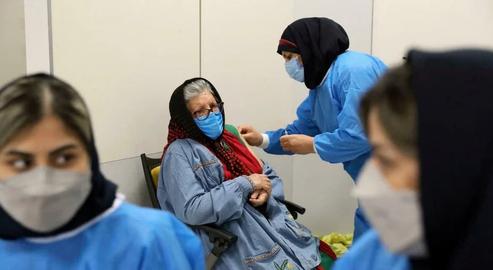Iran is experiencing the highest inflation rate on record, and it’s the country’s lowest earners who are bearing the brunt. The overall inflation rate in September 2021 reached nearly 46 percent, new data published by the Statistical Center of Iran reveals: the highest level since records began.
Prior to this the highest year-on-year inflation was recorded in September 2019, at a rate of nearly 43 percent. This record was broken in June 2021 and has been increasing by the month ever since.
The center’s report outlines that the inflation rate varies between 45.5 percent and 49.4 percent depending on various groups’ expenditure. But why does it affect Iran’s lowest earners specifically? Why aren’t the middle classes hit so hard?
It’s chiefly about the price of food, and how much households have to spend on it. Typically, food accounts for a large portion of low-income households’ expenditure —about about 43 percent — simply because they are less likely to buy non-food items than the middle and upper income classes are.
The Statistical Center notes that the overall average ratio for percentage spent on food is 27 percent. The second-to-lowest income bracket spends 41 percent, and the data shows these percentages go down by income deciles, to 38, 36 and 34 percent for the third to fifth deciles respectively. But the tenth decile, which represents just the wealthiest tenth of the Iranian population, spends 17 percent of overall expenditure on food, despite the fact that they eat more than the poorest.
Under these circumstances, it's natural that rising food prices will put more pressure on the poor. That Statistical Center's data show that the average 12-month inflation rate for food is close to 60 percent; for non-food items it’s around 40 percent. Although the inflation rate for non-food items is also very high, it does not compare with the increase in the cost of food, making it obvious that low-income households bear heavier inflationary pressure than the middle and wealthy classes of society.
It’s also, of course, about what these families put on their tables. Typically, lower-income families use and buy different ingredients than the middle and wealthy classes. For example, bread and cereals are absolutely vital to poorer households, and more important than many other foods. Lower income families spend between 10 and 13 percent of their food budget on bread and cereals. But this ratio is less than four percent in richer households. The poor spend between five and seven percent of their monthly spending on dairy and eggs, compared to less than two percent in the richest decile, even though they eat more dairy and eggs than poorer people. The poorest spend more than five percent of their monthly expenses on vegetables and grains, compared to less than two percent among the highest earners in society.
Rising food prices, in particular bread and cereals, dairy and eggs, as well as vegetables, have resulted in incredible inflationary pressures being placed on the poor and low-income classes. In a comparison of the highest earning and middle-earning groups in society and the lower-middle earners and the lowest earning groups, it’s a difference of between three and four percent.
The report shows that in September 2021, the highest 12-month inflation rate for an individual group of specific food items was reflected in cooking oils, which saw an inflation rate of 93 percent. After that, the inflation rate for dairy products was about 70 percent and for vegetables it was around 62 percent.
The report also looked at inflation and housing. Although lower-income families live in the cheapest houses available, they actually spend more on housing than they can afford. While the average percentage of household budgets allocate about 35 percent to housing in Iran, the lowest-income decile spend more than 38 percent of their household budget on shelter, accommodation that may be worth less than one thousandth of the cost of housing that Iran’s richest people live in. But despite this significant difference, those belonging to Iran’s richest decile still spend no more than 32 percent of overall expenditure on housing.
The new Statistical Center report offers fresh evidence of Iran’s severe socio-economic crisis, which has now reached an unprecedented level. Almost all groups of society are struggling with inflation; the situation is extremely fragile even for some of the better-off groups, the eighth and ninth deciles to which the report refers. It’s also a challenge for high earners, apart from the very top earners in the country. But for those families struggling to cope with paying for day-to-day life, the impact of sky-rocketing inflation is devastating.
Related coverage:
Iran's Western Provinces Ranked Most 'Miserable' in the Country
Number Crunching: The Truth Behind Iran's 'Single-Digit' Unemployment Rate
23 Million Iranian Women Unemployed
Poverty in Iran: An Introduction
visit the accountability section
In this section of Iran Wire, you can contact the officials and launch your campaign for various problems

























comments